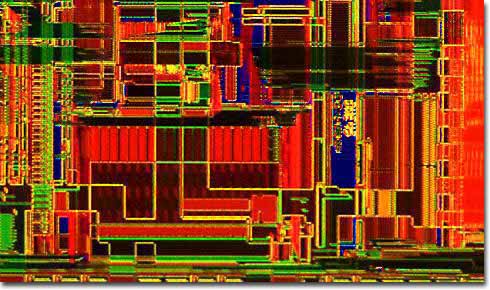|
Representing the fifth generation of Intel microprocessors, the 64-bit Pentium, code-named the P5 during development, succeeded the widely renowned 80486 chip in 1993. With 3.1 million transistors and super-scalar architecture, the Pentium provided five times the performance of the 33 MHz clock speed 486DX in the initial 60 and 66 MHz versions. Even from the initial designs, the Pentium was geared towards a tremendous amount of memory capability with 4 Gbytes of addressable memory and 64 Tbytes of virtual memory. Using 0.8-micron photolithography techniques to fabricate the 262-square-millimeter processor, the Pentium rapidly gained momentum shortly after its initial release. Ultimately, the Pentium and its descendents have become the most scrutinized microprocessor group in history.
|
